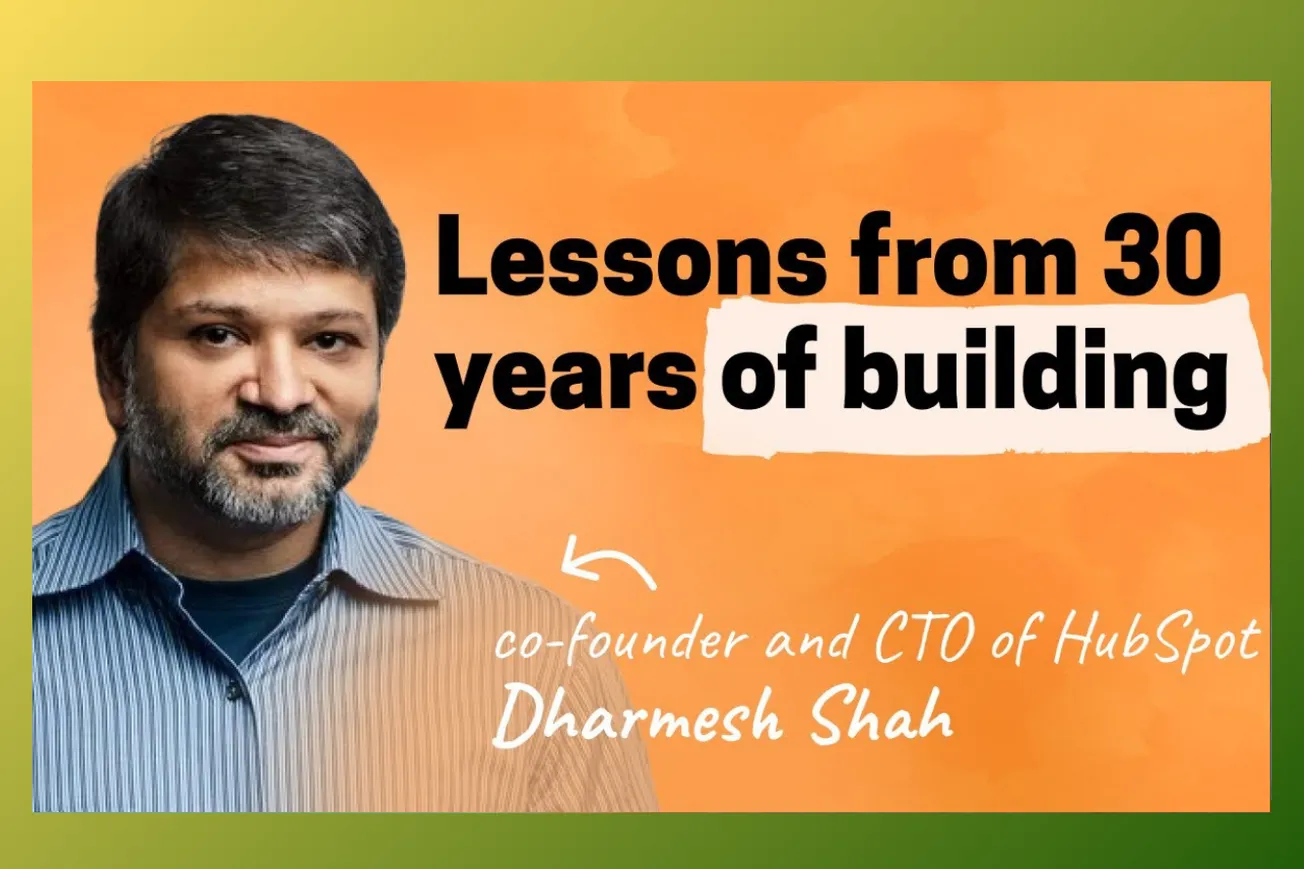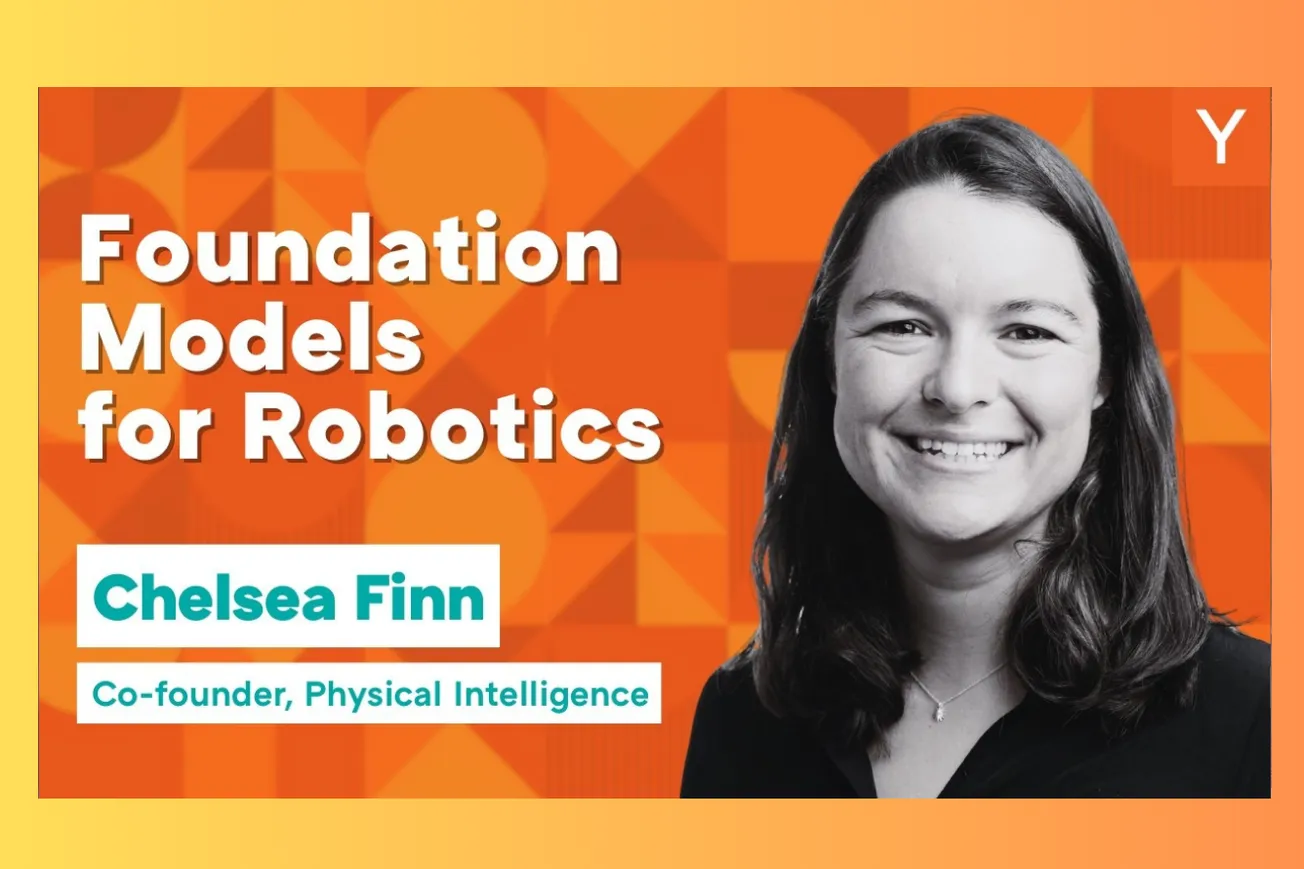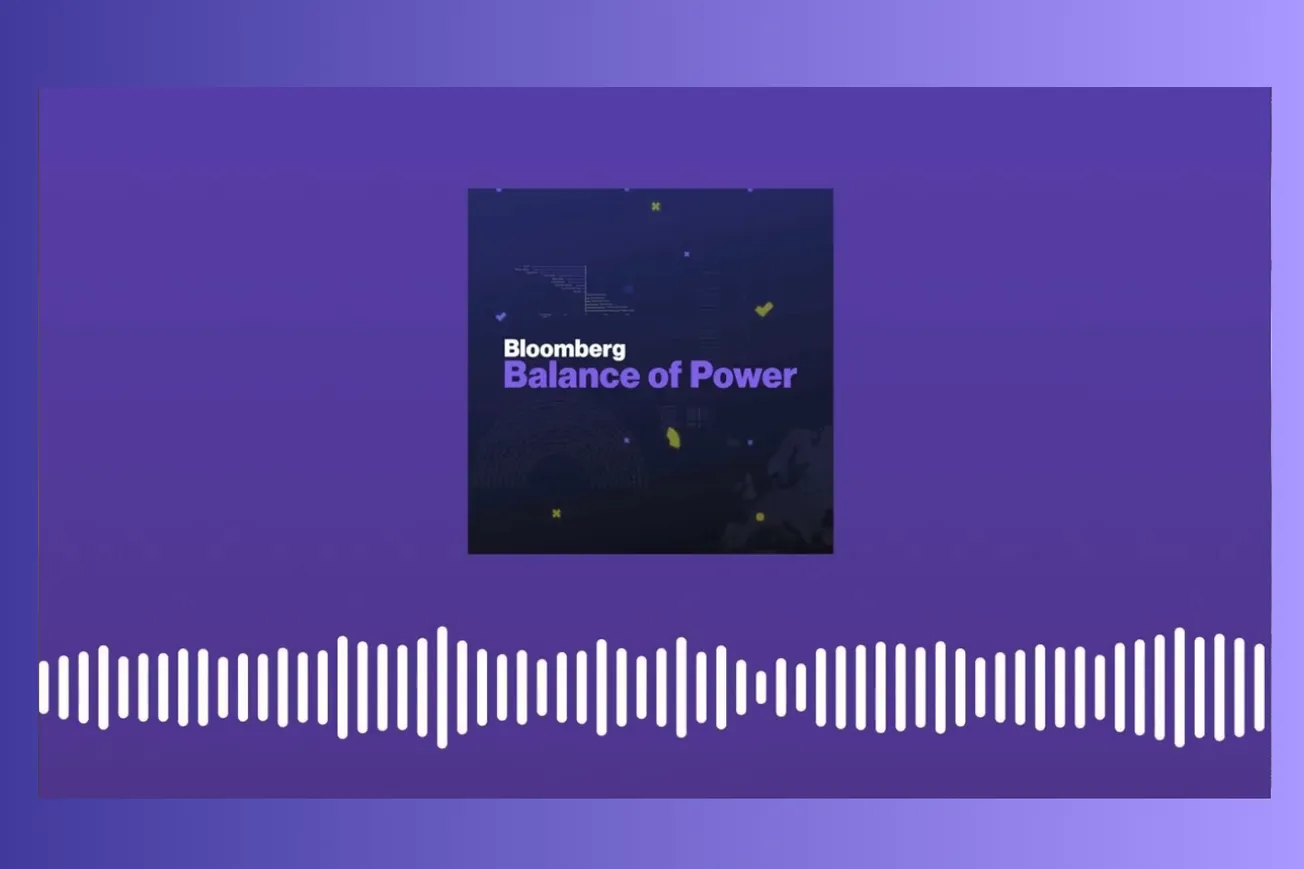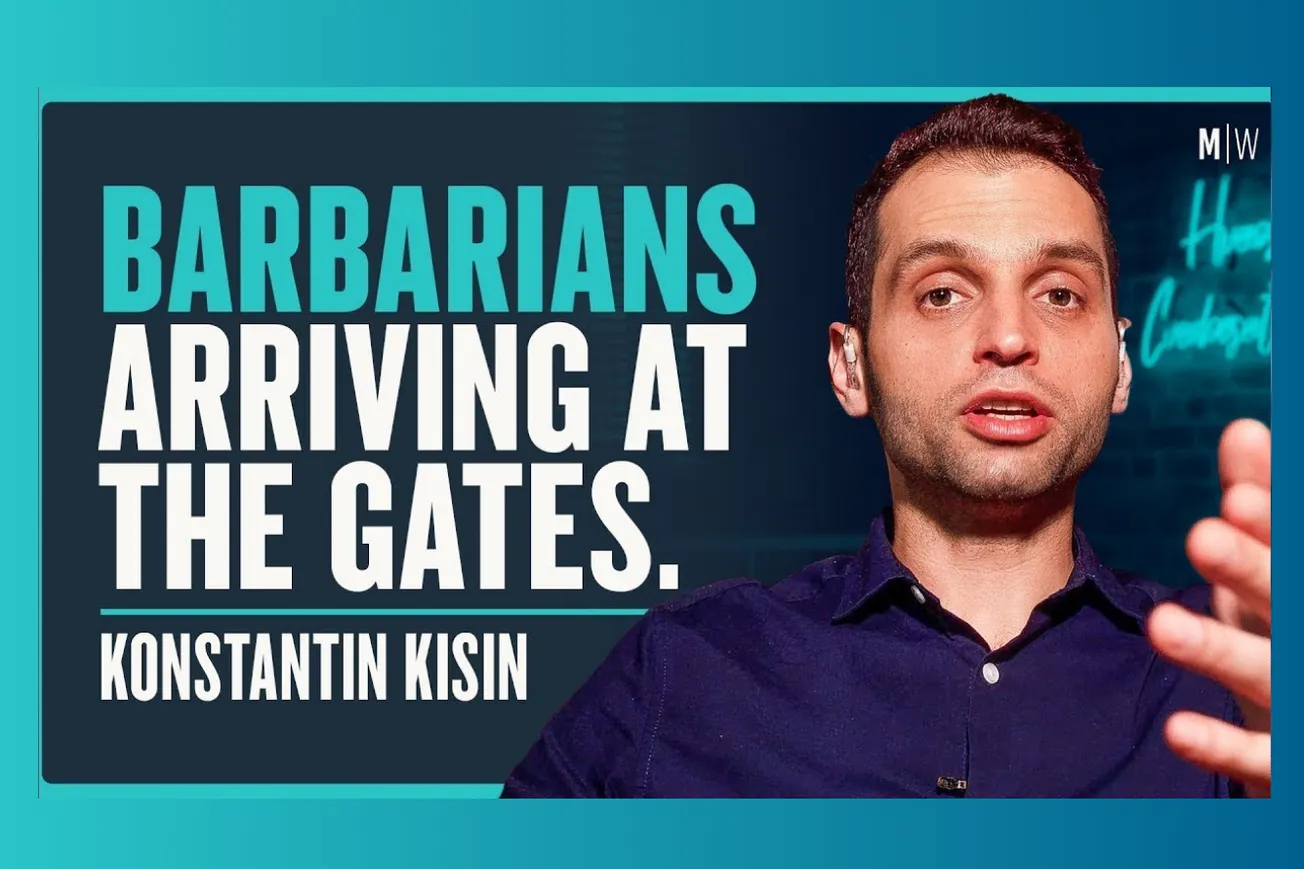Table of Contents
Dharmesh Shah is the co-founder and CTO of HubSpot, currently valued at $30 billion, and one of the most fascinating founders in tech. Beyond building HubSpot, he's created viral products like WordPlay (16 million users), bought and sold chat.com for millions, and developed the legendary HubSpot Culture Code. His approach to business combines systematic thinking with contrarian strategies that challenge conventional startup wisdom.
Key Takeaways
- Lean into your strengths ruthlessly—Dharmesh has had zero direct reports for 18 years because he'd rather excel at what he's good at than become "passively okay" at management
- Culture is a product that needs constant iteration—treat employees as customers and survey them quarterly to identify "bugs" in your culture, just like you would with any product
- Fight complexity with systematic simplicity—everything from seating algorithms to decision-making frameworks should start with the simplest possible solution and add complexity only when necessary
- High conviction, low consensus bets create sustainable advantages—focus on being right about something others think you're wrong about for a very long time
- SMB markets offer the best of both worlds—the monetization benefits of enterprise with the scale and experimentation freedom of consumer products
- Flash tags solve the "megaphone problem"—use #FYI, #suggestion, #recommendation, and #plea to communicate opinion strength and prevent casual thoughts from becoming mandates
- AI represents cognition at scale—the shift from imperative (step-by-step) to declarative (outcome-focused) interfaces will transform all software interactions
- Success means making people who believed in you look brilliant—focus on validating the trust of employees, customers, and investors rather than personal achievement
Timeline Overview
- 00:00–18:46 — Personal Approach and Philosophy: Dharmesh's systematic approach to public speaking using LPM (laughs per minute), his decision to have zero direct reports, and the importance of leaning into strengths
- 18:46–45:22 — Building HubSpot Differently: Lessons from 18 years of growth, contrarian approaches like transparency and simplicity, and fighting the second law of thermodynamics (entropy) in organizations
- 45:22–57:33 — Strategic Contrarian Thinking: Why SMB markets are undervalued, the "zigging vs zagging" philosophy, and when it makes sense to go broad instead of focused
- 57:33–01:15:26 — Operational Excellence: Flash tags for communication clarity, systematic decision-making processes, and frameworks for evaluating ideas using potential, probability, passion, and prowess
- 01:15:26–01:37:03 — Culture as Product: The evolution of HubSpot's Culture Code, treating culture like a product that needs constant iteration, and the difference between core values and changeable practices
- 01:37:03–END — AI and Future Thinking: Why AI represents the biggest shift since the internet, practical advice for learning AI through building, and Dharmesh's definition of success
The Power of Leaning Into Your Strengths
One of Dharmesh Shah's most contrarian decisions was committing to never having direct reports despite leading a 7,000+ person organization. This choice stems from a fundamental philosophy about maximizing personal effectiveness rather than following conventional leadership paths.
"I could become passively okay at management with some training, with some coaching," Shah explains. "I don't want to spend any years of my life becoming passively okay at something. I would rather take those same calories and take the things that I'm good at that I actually enjoy."
This decision required explicit agreement with his co-founder Brian Halligan before starting HubSpot. They established that even in crisis situations—like a VP of Engineering quitting—Shah would not temporarily take on direct reports. This constraint forced them to build systems and processes that could scale without traditional management hierarchies.
- You tend to be good at things you enjoy and enjoy things you're good at—this correlation suggests focusing energy on natural strengths
- Becoming "passively okay" at skills outside your wheelhouse consumes enormous energy for mediocre returns
- Constraints can force innovation—removing the management option required building better systems and processes
- Leadership doesn't require direct reports—influence and impact can flow through other mechanisms
The benefits compound over time. Shah enjoys HubSpot more at 7,000 employees than he did at 70 employees because he gets the advantages of scale (big bets, long-term planning, global reach) without the traditional downsides (management overhead, people politics, administrative burden).
This approach applies beyond management to any area where conventional wisdom suggests well-rounded competence. Rather than trying to eliminate all weaknesses, exceptional leaders often achieve better results by doubling down on their unique strengths while building systems that compensate for their limitations.
Culture as a Product That Requires Iteration
HubSpot's approach to culture development revolutionizes how companies think about organizational design. Rather than treating culture as a fixed set of values to preserve, Shah frames it as a product that serves employees and requires constant iteration based on user feedback.
"Culture is a product, period," Shah explains. "Every company builds two products—one for their customers and one for their team. That's what culture is: the product you build for your team."
This framework unlocks systematic approaches to culture development. Just as you wouldn't build a customer product without user research, you shouldn't build culture without surveying employees. HubSpot conducts quarterly NPS surveys asking employees how likely they are to recommend the company as a place to work, treating culture "bugs" the same way they handle product issues.
- Employee feedback becomes product feedback—quarterly surveys identify what's working and what needs fixing in the culture
- Public transparency around results builds trust—all survey responses are published internally, including critical feedback
- Some elements are "core values" (like transparency) while others are "features" that can change (like flexible hours)
- Aspirational elements can become self-fulfilling prophecies when clearly labeled as goals rather than current reality
The Culture Code deck started as 16 slides answering one question: "If I could write a Python function to measure the probability of success for new HubSpot employees, what would the variables be?" This systematic approach helped identify the attributes that made people successful within HubSpot's specific environment.
The framework prevents the common mistake of trying to "preserve" culture as companies scale. Instead, it embraces evolution while maintaining core principles that define the organization's identity. The culture must adapt to serve the changing needs of employees at different company stages.
Fighting the Second Law of Thermodynamics
Shah applies physics principles to organizational design, arguing that every business leader fights against entropy—the natural tendency for systems to become more disordered over time. This provides a framework for understanding the challenges companies face as they scale.
"The second law of thermodynamics says that within a closed system, entropy increases over time," Shah explains. "In layperson's terms, unless you intervene, everything goes to crap."
Companies progress through three phases of fighting entropy. First, they fight to survive—simply trying not to die. Second, they fight stagnation while maintaining growth momentum. Third, they fight complexity as their own systems and processes threaten to crush them under their weight.
- Stage 1: Fighting death through finding product-market fit and basic viability
- Stage 2: Fighting stagnation while scaling growth and maintaining momentum
- Stage 3: Fighting complexity as layers of management, processes, and decisions accumulate
- Simplicity requires active fighting—complexity happens naturally without intervention
This framework explains why "fight for simplicity" became a core cultural principle at HubSpot. It's not enough to value simplicity; you must actively fight for it because the universe works against you. Every well-intentioned person will add complexity through additional features, processes, or requirements.
The early decision to implement a "one in, one out" rule for product features exemplifies this principle. Every time they added a new feature, they removed an existing one to maintain constant complexity levels. This constraint forced discipline and prevented feature bloat during rapid growth phases.
The Contrarian SMB Strategy
While most successful software companies eventually move upmarket due to "reverse gravity" (bigger customers stay longer and pay more), HubSpot made the contrarian bet to focus exclusively on small and medium businesses for 18 years. This decision required fighting investor pressure and market expectations throughout their growth.
"SMB has almost the best of both worlds," Shah explains. "You have the niceness of enterprise—people pay money for products—but the benefits of consumer because there are millions of them to sell to."
The SMB market offers unique advantages that most founders overlook. Unlike enterprise sales with long cycles and revenue concentration, SMB provides short feedback loops, rapid experimentation capability, and no single customer controlling your roadmap. Unlike consumer markets with binary outcomes, SMB offers measurable, incremental progress with sustainable monetization.
- Millions of potential customers provide scale without revenue concentration risk
- Short sales cycles enable rapid iteration and learning compared to enterprise
- No single customer can dictate product roadmap through large contract leverage
- Measurable progress from $100K to $1M to $10M ARR provides clear milestones
The constraint of serving SMB customers forced beneficial limitations. Premium pricing models don't work when customers have limited budgets, requiring simple products that deliver clear value. This constraint prevented HubSpot from building overly complex solutions that required extensive implementation teams.
Most importantly, few companies maintain SMB focus over time, creating competitive advantages for those with the discipline to resist reverse gravity. While other companies get pulled upmarket, SMB-focused companies compete primarily against each other rather than the entire software industry.
Flash Tags: Solving the Megaphone Problem
Leaders face a persistent communication challenge: casual thoughts get interpreted as mandates due to positional authority. Shah developed "flash tags" to solve this "megaphone problem" by providing a systematic way to communicate opinion strength and expectations.
The system uses four escalating hashtags: #FYI (interesting information, no response expected), #suggestion (worth considering if you were in their position), #recommendation (well-researched opinion with response expected if not implemented), and #plea (deeply considered request representing strong conviction).
"The challenge is people will take an opinion and over-index on what was just a thought," Shah explains. "Because it's inefficient to qualify every time someone asks you something, flash tags solve this systematically."
- #FYI: Sharing information without expectation of action or response
- #suggestion: Casual idea worth considering but no response required
- #recommendation: Well-researched opinion deserving serious consideration and feedback
- #plea: Strong conviction requiring exceptional reasoning to ignore
The system provides searchability and accountability. Leaders can review their past #recommendations to see outcomes and adjust their calibration. Recipients understand exactly what level of consideration each communication deserves.
Notably, even #plea doesn't constitute a mandate—HubSpot maintains a culture of autonomy where people retain decision-making authority in their domains. The system preserves autonomy while providing clarity about how strongly leaders feel about different topics.
Systematic Decision-Making and Idea Evaluation
Shah approaches both decision-making and idea evaluation with engineering-style systematic thinking, breaking complex problems into measurable components that teams can analyze consistently.
For decisions, he advocates identifying all relevant factors before assigning weights, similar to creating Excel columns before filling in data. This prevents premature filtering of options and ensures comprehensive evaluation of alternatives.
For evaluating startup ideas or new products, Shah uses a four-factor framework: Potential (magnitude of possible outcome), Probability (likelihood of success), Passion (personal interest and proximity to the problem), and Prowess (unique advantages or unfair competitive positions).
- Start with potential before probability—don't filter out big opportunities due to low success rates without considering expected value
- Force yourself to identify all decision factors before weighting them to prevent unconscious bias
- Calories spent on decisions should be proportional to their consequences and reversibility
- Default to "no" on new opportunities to force clear reasoning for "yes" decisions
The framework prevents common evaluation mistakes like dismissing high-potential opportunities due to low success rates without calculating expected value. A 10% chance at a $100M outcome might be better than a 50% chance at a $10M outcome, depending on your situation and risk tolerance.
Shah's approach of defaulting to "no" on new opportunities forces explicit reasoning for commitments. Since saying yes to anything means saying no to something else, this systematic evaluation helps maintain focus on the highest-value activities.
AI as Cognition at Scale
Shah views AI as the third major computing revolution, following computers (compute at scale) and the internet (distribution at scale). AI provides "cognition at scale"—the ability to amplify human thinking in ways previously impossible.
"What AI gives us now is cognition at scale—the ability to literally amplify the human brain," Shah explains. "That's never been done before."
The transformation involves shifting from imperative interfaces (step-by-step instructions) to declarative interfaces (describing desired outcomes). Instead of clicking through complex software workflows, users can describe what they want and let AI figure out the implementation steps.
- Imperative model: "Click here, drag this, select that option" (current software interfaces)
- Declarative model: "Generate a report of European customers signed last quarter with >$100K ARR" (AI-enabled interfaces)
- Most software isn't actually "intuitive"—it requires mental translation from desired outcome to interface actions
- AI eliminates the translation layer between human intent and software execution
Shah's experience building GrowthBot six years ago (a chatbot that didn't work due to technology limitations) versus ChatSpot today (which does work) illustrates how rapidly AI capabilities have advanced. The same product concept that failed in 2017 succeeds in 2024 due to dramatic improvements in natural language processing and reasoning.
For product builders, this suggests opportunities to reimagine existing software categories with AI-native interfaces that eliminate the complexity of traditional workflows. Rather than making existing interfaces slightly better, AI enables entirely new interaction paradigms.
Common Questions
Q: Why does Dharmesh Shah have zero direct reports despite running a large organization?
A: He believes in maximizing strengths rather than becoming "passively okay" at management. This constraint forced HubSpot to build better systems and processes while allowing him to focus on areas where he excels.
Q: How does HubSpot treat culture as a product?
A: They survey employees quarterly like customer NPS surveys, identify "bugs" in the culture, and iterate on cultural practices while maintaining core values. Culture evolves to serve changing employee needs as the company scales.
Q: What are flash tags and how do they solve the "megaphone problem"?
A: A system using #FYI, #suggestion, #recommendation, and #plea to communicate opinion strength. This prevents casual thoughts from being interpreted as mandates due to positional authority.
Q: Why did HubSpot focus on SMB instead of moving upmarket like most companies?
A: SMB offers the best of both worlds—monetization like enterprise (people pay for software) but scale and experimentation freedom like consumer (millions of potential customers, short feedback loops).
Q: What is the "second law of thermodynamics" for businesses?
A: Unless you actively intervene, complexity increases over time. Companies must fight entropy through systematic simplicity, or they'll be crushed by their own processes and bureaucracy.
Q: How should founders evaluate new ideas or opportunities?
A: Use four factors—Potential (outcome magnitude), Probability (success likelihood), Passion (personal interest), and Prowess (unique advantages). Start with potential before probability to avoid filtering out high-value opportunities.
Conclusion
Dharmesh Shah's approach to building HubSpot demonstrates how systematic thinking and contrarian strategies can create sustainable competitive advantages. Rather than following conventional startup wisdom, he and his co-founder consistently "zigged while others zagged"—focusing on SMB when others chased enterprise, building broad products when others advocated focus, and maintaining transparency when others preferred control.
The key insight is that successful contrarian strategies require high conviction backed by systematic reasoning. It's not enough to be different; you must be right about something important that others misunderstand. HubSpot's success validates their contrarian bets on SMB focus, product breadth, and cultural transparency—decisions that seemed risky but proved foundational to their growth.
Most importantly, Shah's emphasis on systematic frameworks—from flash tags to decision-making processes to culture development—shows how engineering thinking can improve business operations. By treating business challenges like technical problems requiring systematic solutions, leaders can build more scalable and effective organizations.
Practical Implications
- Identify and double down on your unique strengths: Instead of trying to become well-rounded, lean into what you're naturally good at and build systems to compensate for weaknesses
- Treat culture as an iterative product: Survey employees quarterly, identify cultural "bugs," and continuously evolve practices while maintaining core values that define your organization
- Fight complexity systematically: Implement constraints like "one in, one out" rules and default to simplest solutions that might work before adding complexity
- Use flash tags for clearer communication: Implement #FYI, #suggestion, #recommendation, and #plea to prevent casual thoughts from being interpreted as mandates
- Consider contrarian market strategies: Evaluate opportunities others avoid—SMB markets may offer better risk/reward profiles than enterprise or consumer alternatives
- Apply systematic frameworks to decisions: Create evaluation criteria before weighing options, and ensure effort invested in decisions matches their importance and reversibility
- Default to "no" on new opportunities: Force explicit reasoning for commitments since saying yes to anything means saying no to something else
- Embrace AI's declarative interface potential: Look for opportunities to eliminate the translation layer between human intent and software execution in your product category
- Build for your specific context: Adapt proven frameworks rather than copying them exactly—what works for HubSpot may need modification for your situation





